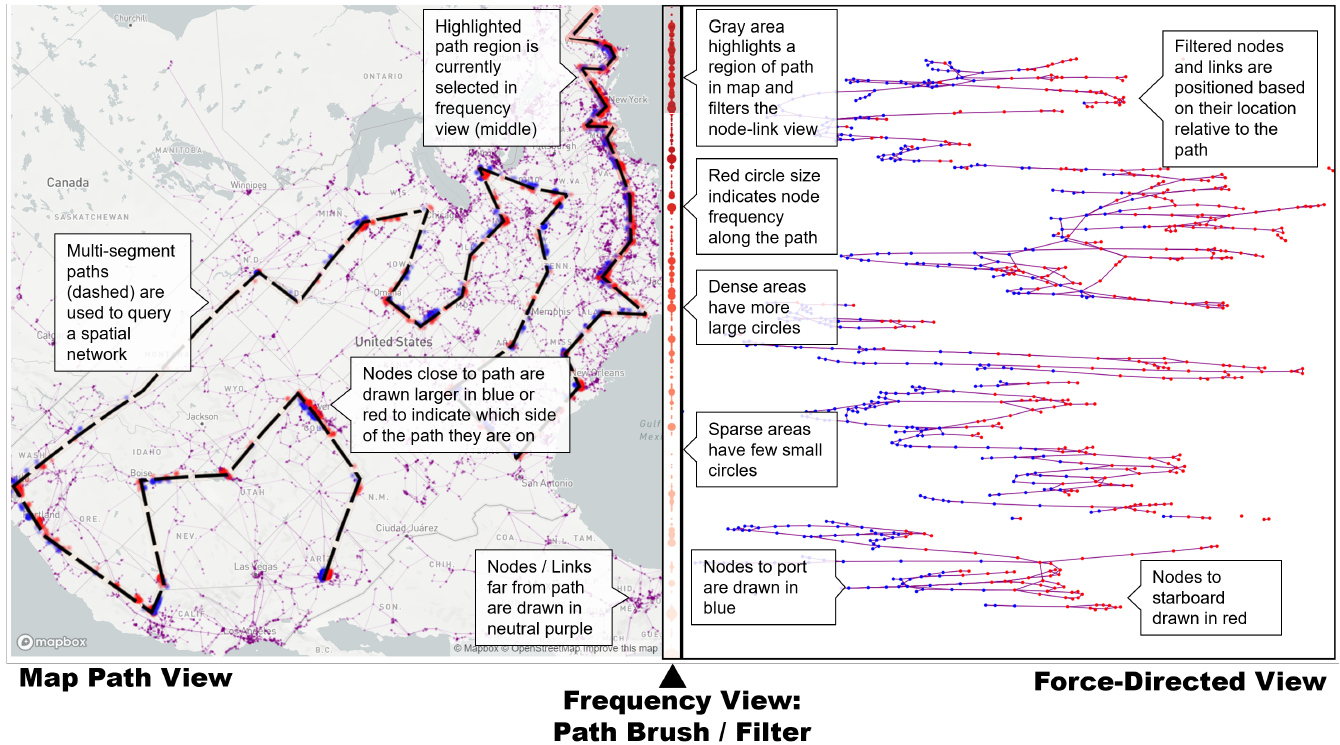Paths Through Spatial Networks

My work on spatial network visualization will be presented at IEEE VIS in Oklahoma City! This combines an interactive spatial and linked network view to let you explore both at the same time.
Abstract
Spatial networks present unique challenges to understanding topological structure. Each node occupies a location in physical space (e.g., longitude and latitude) and each link may either indicate a fixed and well-described path (e.g., along streets) or a logical connection only. Placing these elements in a map maintains these physical relationships while making it more difficult to identify topological features of interest such as clusters, cliques, and paths. While some systems provide coordinated representations of a spatial network, it is almost universally assumed that the network itself is the sole mechanism for movement across space. In this paper, I present a novel approach for exploring spatial networks by orienting them along a point or path in physical space that provides the guide for parameters in a force-directed layout. By specifying a path across topography, networks can be spatially filtered independently of the topology of the network. Initial case studies indicate promising results for exploring spatial networks in transportation and energy distribution.
Citation and Link
Godwin, A. (2022, October). Paths through spatial networks. In 2022 IEEE Visualization and Visual Analytics (VIS) (pp. 31-34). IEEE. Link:
